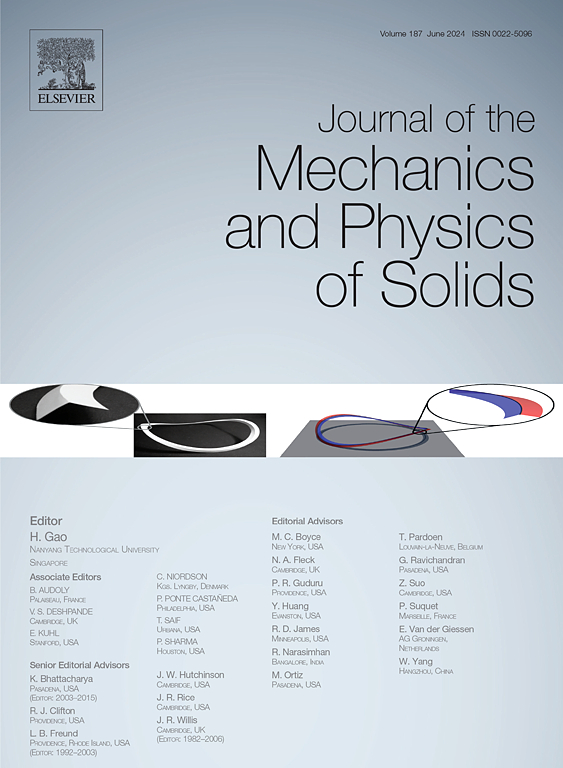Magnetothermal dehydration induced deformation of hydrogel structures: Modelling and experiment
IF 5
2区 工程技术
Q2 MATERIALS SCIENCE, MULTIDISCIPLINARY
引用次数: 0
Abstract
Magnetic hydrogels have found broad applications in soft robotics and bioengineering, due to their facile actuation response and good biocompatibility. However, the actuation of magnetic hydrogels embedded with superparamagnetic nanoparticles remains challenging because of the low magnetization. In this work, we investigate the magnetothermal dehydration induced deformation of magnetic hydrogel-elastomer structures through modelling and experiments. The magneto-thermosensitive hydrogel undergoes significant volume change and dehydration under the application of alternating magnetic field. The magnetothermal dehydration of hydrogel is modelled by considering the heat generation of nanoparticles, heat transfer, and volume collapse of thermosensitive hydrogels. These sequential physical processes have not been considered by previous models. The magnetothermal dehydration model can predict the nonlinear temperature change and abrupt volume collapse of magneto-thermosensitive hydrogels during phase transition. Integrating the magnetothermal dehydration with the phase-evolution approach, we obtain the bending solution of magnetic hydrogel-elastomer bilayers. The magnetothermal dehydration induced bending deformation has been realized and predicted in various conditions, including various magnetic particle content, hydrogel thickness and magnetic field intensity. The deformation of complex structures has been further achieved and numerically reproduced by implementing the dehydration strain and modulus change into finite element analysis. This work may provide guidance for the shape morphing and applications of magnetic hydrogels.
求助全文
约1分钟内获得全文
求助全文
来源期刊
CiteScore
9.80
自引率
9.40%
发文量
276
审稿时长
52 days
期刊介绍:
The aim of Journal of The Mechanics and Physics of Solids is to publish research of the highest quality and of lasting significance on the mechanics of solids. The scope is broad, from fundamental concepts in mechanics to the analysis of novel phenomena and applications. Solids are interpreted broadly to include both hard and soft materials as well as natural and synthetic structures. The approach can be theoretical, experimental or computational.This research activity sits within engineering science and the allied areas of applied mathematics, materials science, bio-mechanics, applied physics, and geophysics.
The Journal was founded in 1952 by Rodney Hill, who was its Editor-in-Chief until 1968. The topics of interest to the Journal evolve with developments in the subject but its basic ethos remains the same: to publish research of the highest quality relating to the mechanics of solids. Thus, emphasis is placed on the development of fundamental concepts of mechanics and novel applications of these concepts based on theoretical, experimental or computational approaches, drawing upon the various branches of engineering science and the allied areas within applied mathematics, materials science, structural engineering, applied physics, and geophysics.
The main purpose of the Journal is to foster scientific understanding of the processes of deformation and mechanical failure of all solid materials, both technological and natural, and the connections between these processes and their underlying physical mechanisms. In this sense, the content of the Journal should reflect the current state of the discipline in analysis, experimental observation, and numerical simulation. In the interest of achieving this goal, authors are encouraged to consider the significance of their contributions for the field of mechanics and the implications of their results, in addition to describing the details of their work.

 求助内容:
求助内容: 应助结果提醒方式:
应助结果提醒方式:


